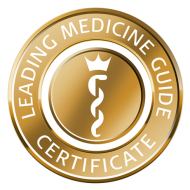Was unsere Patienten sagen
Webinar: Troublemaker in der Kinderwunschbehandlung
Sie können das Webinar hier nachsehen:
Sehr professionelle Betreuung
Man kann sich auf die Expertise verlassen. Danke von Herzen!Kinderwunsch & Gelbkörperschwäche
Erfahren Sie, welche Funktionen der Gelbkörper im weiblichen Zyklus hat, welche Auswirkungen eine Gelbkörperschwäche auf die Einnistung des Embryos und den Erhalt der Schwangerschaft haben kann, und welche Behandlungsmöglichkeiten es gibt. Besonders interessant für Frauen in der Kinderwunschphase oder mit Zyklusproblemen.Sehr geehrter Herr Prof. Feichtinger!
Ihnen und Ihrem Team vielen, vielen Dank, für die Erfüllung unseres Kinderwunsches. Unser Sohn D. bereitet uns große Freude. Es ist schön, wie sie aus Paaren Familien machen. Familie T.Kinderwunsch & Eileiter
Zum Glück sind verschlossene Eileiter in vielen Fällen relativ einfach bspw. mittels künstlicher Befruchtung zu beheben. Ursache sind häufig vergangene Infektionen von Chlamydien bis Endometriose, die zu einem Verkleben der Eileiter geführt haben. Wie die Diagnose erfolgt und was sonst noch alles wichtig ist, klärt Mag. Julia Ecker mit Priv. Doz. DDr. Feichtinger vom Wunschbaby Institut Feichtinger in Wien in dieser Podcast Episode.Lesen Sie mehr

Homologous Intrauterine Insemination
The artificial introduction of the semen into the uterus.
The goal of light hormonal therapy is to stimulate the growth of 1-2 follicles. Follicular maturation and the continued growth of the uterine lining is monitored per ultrasound. Based on the size of the follicles, the thickness of the uterus lining, and through ovulation tests, the point of ovulation can be predicted. In most cases, ovulation is medically induced once the follicles have achieved a certain size – providing the best time for the insemination.
The semen obtained for IUI (through masturbation) is prepared in the laboratory and then inserted into the female’s uterus through the cervix using a thin, flexible plastic tube called a catheter.
In most cases, this procedure does not cause any complications, pain, or discomfort.
By providing the sperm with a "shortcut” on the route that they would naturally have to conquer in order to fertilize the egg, the primary goal of this method is to increase the probability of conception. The chance of becoming pregnant with this method is approximately 15-20% per cycle.
- Overview
- IVF
- IVF in 10 steps
- Cause of miscarriages
- Assisted-Hatching
- Chipsi
- Application of Seminal Plasma
- Egg cell donation
- Genetics
- Testicular puncture
- Insemination
- ICSI
- Fertility treatment in same-sex couples
- The dream to have children despite cancer
- Complementary Medicine
- Cryopreservation
- Male Infertility
- PICSI
- Psychotherapeutic support
- Sperm and egg cell donations
- Social Freezing



































